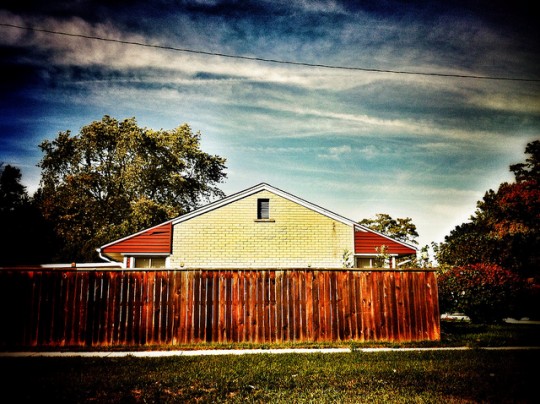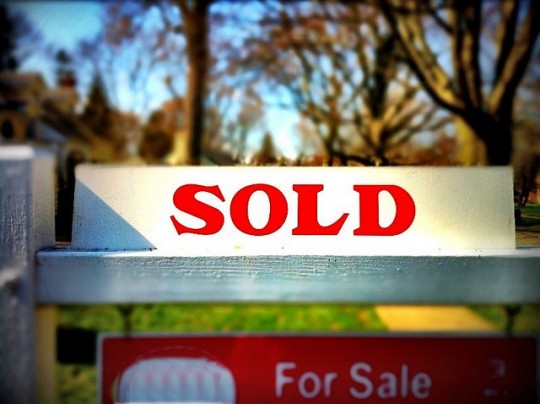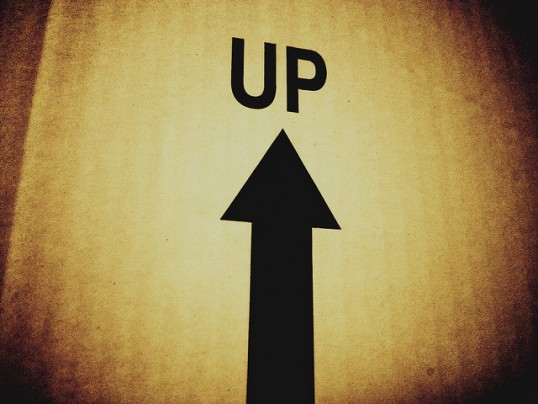According to the Mortgage Bankers Association’s Weekly Applications Survey, the average contract interest rate for 30-year fixed-rate mortgages climbed slightly last week from the week before. It was the second consecutive week of mortgage rate increases, with the average rate up for conforming loan balances, jumbo loans, and mortgages backed by the FHA. The rise in rates coincided with an 8.5 percent decline in the Market Composite Index, which measures total mortgage loan application volume. The Refinance Index fell 11 percent, while the unadjusted Purchase Index was virtually unchanged from the previous week. Michael Fratantoni, MBA’s chief economist, said though demand for purchase applications was little changed, this is the time of year when a significant pickup in purchase activity would typically begin. The MBA’s survey has been conducted weekly since 1990 and covers 75 percent of all retail residential mortgage applications. More here.
Archive for February 2014
New Home Sales Hit 5 ½ Year High
Sales of new single-family houses surged to a five-and-a-half year high in January, jumping 9.6 percent from an upwardly revised December estimate. The sales spike was welcome news after harsh winter weather led to the slowing of a number of economic indicators during the month. It was also unexpected. Surveyed economists forecast a slight dip in sales for the month, expecting them to fall rather than rising to their highest level since July 2008. January sales were 2.2 percent above year-before levels and reached a seasonally adjusted annual rate of 468,000 units. Regionally, new home sales saw double-digit increases in the Northeast, West, and South, while tumbling 17.2 percent in the bitterly cold Midwest. The median sales price of new houses sold in January was $260,100; the average price was $322,800. Also, there was a 4.7-month supply of new homes available for sale at the end of month. More here.
Delinquency Rate Falls To Pre-Crisis Level
The delinquency rate – which includes mortgage loans that are at least one payment past due but not loans in the process of foreclosure – dropped to its lowest level since the first quarter of 2008 at the end of last year. The improvement brought the seasonally adjusted rate down to 6.39 percent of all loans, close to the historical average of around 5 percent. The data – from the Mortgage Bankers Association’s National Delinquency Survey – also showed that the foreclosure inventory was at its lowest level since 2008 as well. Michael Frantantoni, MBA’s chief economist and senior vice president of research and industry technology, said there continues to be substantial improvement in both delinquency and foreclosure rates, with most measures now back to pre-crisis levels. The delinquency rate, at its peak in 2010, was more than 10 percent of all loans. More here.
Cost of Buying Rises, Still Cheaper Than Rent
With last year’s price and mortgage rate increases, the estimated monthly house payment for a median-priced, three-bedroom home has risen, according to a new analysis from RealtyTrac. But, though affordability levels have fallen, buying a home was still cheaper than renting in 91 percent of the 325 counties included in the report. Daren Blomquist, vice president at RealtyTrac, said the monthly cost of owning a home is still less than renting in the majority of markets but a combination of rising home prices and increasing interest rates during the second half of 2013 has caused the cost of owning a home using traditional financing to jump over the last year. In fact, the estimated monthly payment – including mortgage, insurance, taxes, maintenance, and subtracting the estimated income tax benefit – increased an average of 21 percent from a year earlier. The increase was driven, in part, by a 10 percent spike in median prices across the 325 counties included in the analysis. More here.
Sales of Previously Owned Homes Slip 5.1%
Sales of previously owned homes fell 5.1 percent in January, according to estimates released by the National Association of Realtors. With the drop, last month’s sales pace was the slowest since July 2012. Lawrence Yun, NAR’s chief economist, believes unusual weather played a role in the decline. According to Yun, disruptive and prolonged winter-weather patterns across the country are impacting a wide range of economic activity and housing is no exception. Decreasing sales activity is expected to turn around, however, as the weather warms and the selling season begins this spring. Also in the report, prices continue to rise, with the median existing-home price up 10.7 percent from one year earlier. In part due to limited inventory, price increases are also being driven by a nearly 10 percent year-over-year drop in the number of distressed homes, including foreclosures and short sales, sold during the month. And though inventory has tightened, January’s estimate shows a slight increase from the month before. At the current sales pace, there was a 4.9 month supply of unsold homes available for sale at the end of January, up from 4.6 months in December. A six-month supply is considered healthy for the market and represents an equal balance of buyers and sellers. More here.
New Home Constructions Stalls In January
After hitting a five-year high in November, new residential construction has since stalled, joining a number of other economic indicators that have slowed due to the severe winter weather affecting much of the country. According to estimates released by the U.S. Census Bureau and the Department of Housing and Urban Development, single-family housing starts fell 15.9 percent in January. Building permits for future construction also slipped during the month, dropping 1.3 percent from the revised December estimate. The declines were largely expected and credited to a particularly harsh winter. For example, new home construction was down 67.7 percent in the Midwest, where record snow and frigid temperatures disrupted groundbreakings. Year-over-year, building permits were up 2.4 percent over last year, while housing starts came in 2 percent below year-before levels. More here.
Mortgage Rates Rise For First Time In Weeks
After five consecutive weeks of declines, the average contract interest rate for 30-year fixed-rate mortgages moved up last week from the week before. According to the Mortgage Bankers Association’s Weekly Application Survey – which covers 75 percent of all U.S. retail residential mortgage applications – rates rose on conforming loan balances, jumbo loans, and mortgages backed by the FHA. The rate increase coincided with a 4.1 percent drop in total mortgage application volume, due in part to a 6 percent decrease in the Purchase Index, which hit its lowest level in three years. The Refinance Index also fell, dropping 3 percent from the previous week and bringing the refinance share of total mortgage activity down to 61 percent from 62 percent the week before. The Mortgage Bankers Association’s survey has been conducted weekly since 1990. More here.







